
Paranormasight: The Seven Mysteries of Honjo Review
Paranormasight: The Seven Mysteries of Honjo caught my eye upon its unveiling at the last Nintendo Direct livestream in Japan. I was worried for a moment that it would only launch there, though thankfully it was announced as a worldwide release shortly after. A new horror mystery-adventure game developed by Xeen Inc. and published by Square Enix… sign me up. RPG fans might recognize Xeen Inc. as the development studio behind the delightful 3D remake of Trials of Mana.
Admittedly, Paranormasight is a tricky game to talk about and is best experienced knowing as little as possible. If you’re the slightest bit interested in an occult thriller set in 80s Japan, I highly recommend Paranormasight. Close this review now and play it as soon as you get the chance.
If you want to know more, it’s almost impossible to talk about Paranormasight earnestly without spoiling what happens in the prologue. It’s roughly the first hour of the game, but it establishes many core pillars of its premise and structure - which may be, once again, best experienced without knowing the specifics beforehand.
I’m glad I experienced it without any prior knowledge, so consider that going forward.
I really enjoyed my time with Paranormasight and will try my best to keep spoilers to a minimum beyond the prologue. With all that said, this is your last spoiler warning.
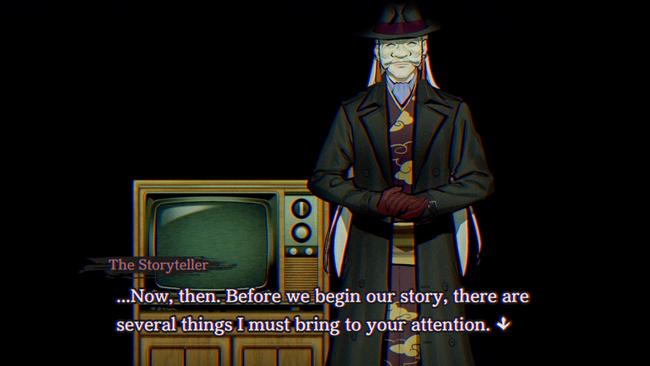
Upon starting Paranormasight, players are immediately greeted by the enigmatic, and rather dapper, Storyteller. He introduces the basic elements of the UI and candidly asks the player what they would do if they were given the opportunity to resurrect someone. Four responses are laid out - doing it at the cost of your own life, doing it at the cost of someone else’s life, doing it if there was no cost attached, or merely passing the opportunity onto someone else.
No matter how players respond, it provides a first sample of the expected tone of Paranormasight to come. The Storyteller mentions that players will be meeting characters that all have different answers to this same question. Then, players wake up as a man named Shogo Okiie.
The first thing that stuck out to me is the 360-degree rotational view of the camera. Paranormasight often lets players examine the world around them to observe their general surroundings and any relevant objects of interest. If a player has exhausted everything there is to learn about something, the game will provide a handy checkmark when hovering over it to let them know that they can rest easy in examining something else. Due to the 360-degree camera providing a panoramic image of the player’s surroundings, there’s naturally a fisheye lens effect applied when looking around most environments; it took me a bit to get used to, but I eventually didn’t even notice it after a while.
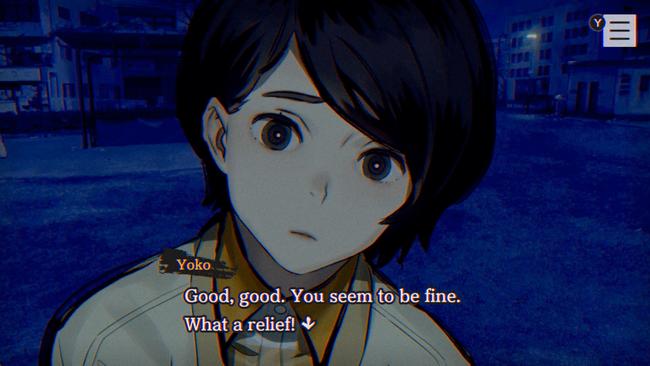
People are quickly introduced to another character, Yoko Fukunaga. Shogo and her are at a playground looking into the rumors surrounding the Seven Mysteries of Honjo, based on the real-life urban legends of the Seven Wonders of Honjo. In Paranormasight, these stories feed into the supernatural Rite of Resurrection - a ritual that allows a person to resurrect someone they’ve lost. Occult fanatic Yoko is still heartbroken over the recent loss of her dog and seeks the Rite of Resurrection to get them back.
Dialogue options are a peculiar thing in Paranormasight when speaking with someone. There are a handful of topics to choose from, but they’re often reusable; people usually have multiple different things to say about each one, so players usually have to exhaust each point before proceeding. Similar to examining things in the environment, a checkmark will indicate when a person has nothing new to say about a talking point. Sometimes, other discussion topics have to be “completed” before proceeding forward with an earlier one, too.
After chatting with Yoko for a bit, disaster strikes. A terrified Yoko points to something behind Shogo. Players check behind him to find… nothing.
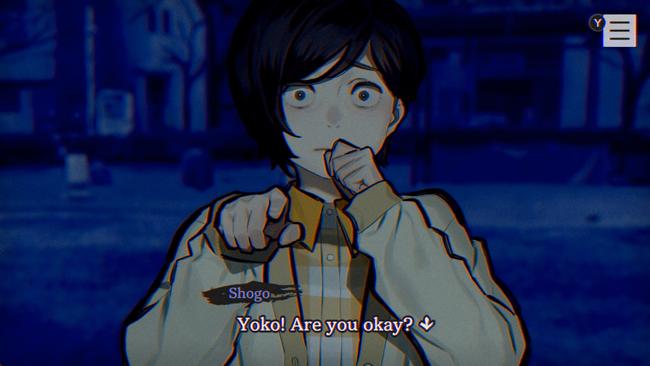
They look back at Yoko.
She has slumped to the ground - dead instantly.
A panicked Shogo calls for an ambulance in a nearby telephone booth. Stuck waiting for help to arrive, he senses the unsettling presence that shook Yoko up. Nearby her corpse lies a small trinket and upon touching it, Paranormasight turns into a game I, frankly, wasn’t expecting.
The trinket is the Curse Stone of the Whispering Canal - one of the Seven Mysteries of Honjo. It gives its user the supernatural power to kill anyone that faces their back towards them with the intent of leaving them. Those that wield Curse Stones are known as Curse Bearers and each of Honjo’s paranormal tales has a Curse Stone associated with them.
Every life that a Curse Stone takes is converted into energy in the form of ‘soul dregs’. Once a Curse Stone collects a certain amount of soul dregs, it can supposedly initiate the Rite of Resurrection. Non Curse Bearers aren’t worth much soul dregs, but other Curse Bearers have a considerable amount of soul dregs that quickly fill up Curse Stones.
Shogo learns most of the basics as soon as he becomes the Curse Bearer of the Whispering Canal. He intends to seek out other nearby Curse Bearers to perform the Rite of Resurrection on Yoko.
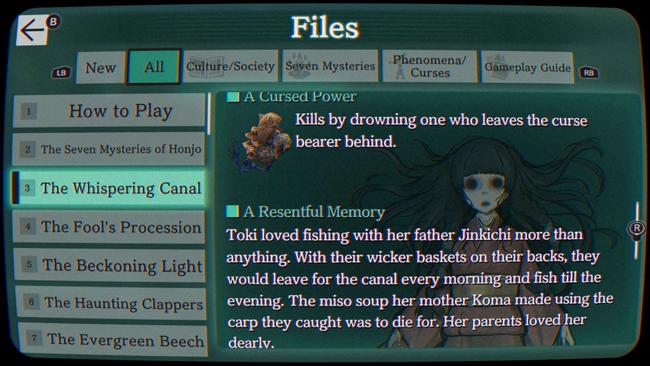
Yes, that’s right; the prologue to Paranormasight is not too far off from what you see in JoJo’s Bizarre Adventure.
Players make their way around town from one locale to the next to find Curse Bearers. It gives the game a chance to gradually teach players about more mechanics they’ll encounter in Paranormasight.
Common adventure game elements, such as avoiding bad endings by having the proper item and using it at the right time, are all present and straightforward. For instance, a Curse Bearer’s reliance on darkness as a prerequisite to activating their Curse Stone is quickly countered by an abandoned lighter that was picked up shortly beforehand. Whenever the player mistakenly gets Shogo killed, the Storyteller steps in and allows them to re-do it correctly to proceed.
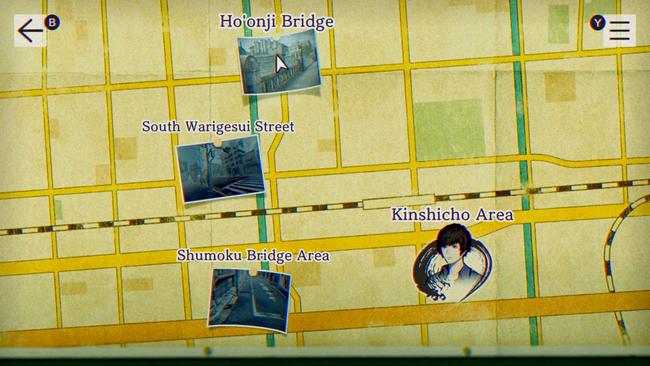
Of course, anyone that tries to flee from Shogo naturally has to show their back towards him. A ‘Use Curse’ prompt shows up when the Whispering Canal’s Curse Stone can be utilized, so the player can start saving up soul dregs. Not everyone Shogo meets is an immediate enemy; other significant characters are introduced and aren’t immediately hostile. Still, it’s difficult not to be amused by Paranormasight exuding the energy of JoJo Bizarre’s Adventure when Shogo monologues to himself if the person standing before him is a Stand User Curse Bearer and whether he can activate his Curse Stone before they can.
There are a few segments in this introductory prologue that genuinely surprised me; these specific fourth wall aspects have been done in several adventure games and visual novels before, though it caught me off-guard in how Paranormasight presented it.
Without delving too much further in how the prologue plays out, this sequence of events concerning Shogo hunting down Curse Bearers eventually ends - perhaps far faster than some players may be expecting, if they were expecting the whole game to be about Shogo’s bloody journey to revive Yoko.
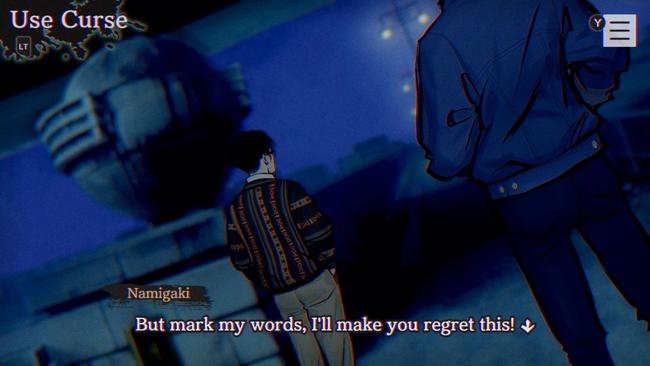
The Storyteller transports players back to the flashpoint where Yoko was terrified at something. Now armed with the knowledge of Curse Stones, Curse Bearers, and so forth, players now know that they shouldn’t look behind Shogo at all costs. Instead, they’re now given the new option to calm Yoko down without turning away from her. Shogo calls a cab for Yoko to get her home. Everything should be fine now, right? Yoko is fine now and all the questionable things Shogo committed in the “tutorial” path technically didn’t happen here. Nice one-hour game, Square Enix.
Paranormasight fast-forwards a bit to the next morning.
A report is coming in that someone has been found dead… at a playground.
The camera slowly pans down at the corpse of a man identified as Shogo Okiie; players will immediately recognize that the character they were controlling just a few moments ago has passed away in the same way as Yoko previously. Now, the game has officially begun.
Welcome to Paranormasight: The Seven Mysteries of Honjo.
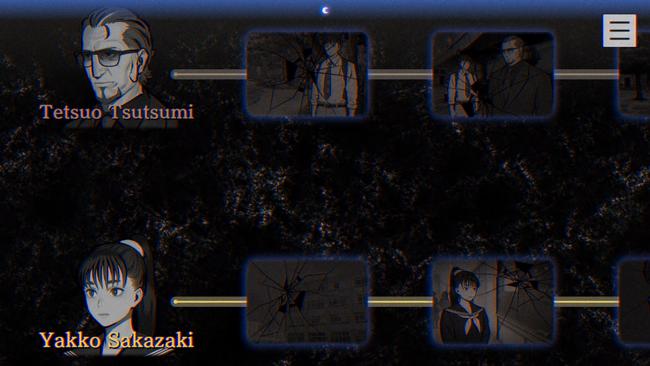
From here on, the Storyteller opens up the story paths of three new characters. These people are familiar faces to the players at this point when they were Shogo. They all share something in common; they all became Curse Bearers that night as well.
Piecing together the entire truth of Paranormasight revolves around bouncing between these three characters. A character’s story may be blocked from progressing further until the player reaches a certain narrative point with another character. There was an interesting instance where I had to “park” a character at a specific location for another character to meet up with them, once I switched over to their story.
There are a lot of small details I appreciated in Paranormasight’s narrative design and flow. It never does the same thing for too long, and often switches up how the player interacts with its story. Although this game is less puzzle focused, fans of the Zero Escape games will probably like what Paranormasight has to offer in this respect.
Paranormasight after its prologue is less JoJo’s Bizarre Adventure and more of an investigative thriller; it kinda reminded me of Fate/stay night weirdly enough. Once the story fully switches into daytime, the search for Curse Bearers becomes safer because Curse Stones can no longer be activated in this time; that isn’t entirely dissimilar to how Fate/stay night handled a similar narrative beat.
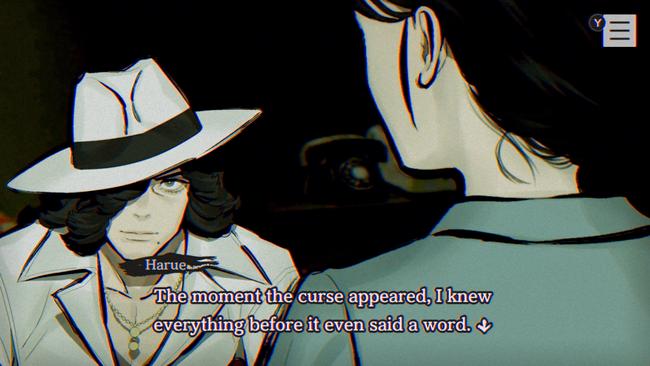
Each character has a partner they’re with most of the time, so there aren’t long stretches of being completely stranded alone. I found Paranormasight to be a pretty accessible horror story due to this aspect. There are rarely any jump scares thrown at players. If it does, it’s only for a split-second and isn’t concerned with keeping players in a panicked state. Instead, the type of horror that this game instills leans more on maintaining an eerie atmosphere. There are many disturbing details unraveled throughout this 12-hour adventure, but it does an admirable job switching up its mood, so players aren’t constantly afraid or dreadful all the time.
Paranormasight eases up on the tension with its fantastic soundtrack from Hidenori Iwasaki; fans may recognize him from his contributions in Final Fantasy XI, Front Mission 4, Front Mission 5: Scars of the War, and the recent Stranger of Paradise: Final Fantasy Origin. Iwasaki’s approach in Paranormasight is, understandably, less grandiose than his previous RPG endeavors.
In exchange, players are treated to a more grounded, urban sound that fits the small town setting. The game even has an amusing 80s beat cop track that is often utilized for a pair of detectives as they run around town for answers; sometimes, this track oddly overstays its welcome as it continues to play during emotionally charged scenes that somewhat betrays the gravity of the situation. Other than that, Paranormasight’s musical direction ranges from whimsically fun tunes, enticingly horrific melodies, and hopelessly depressing pieces. There’s an energy to it that reminds me of the immaculate 428: Shibuya Scramble.
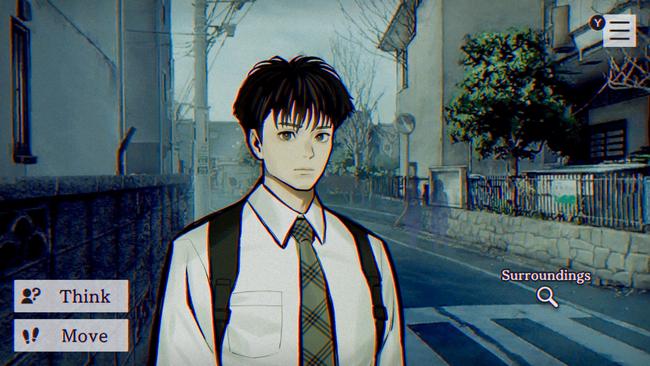
There’s a distinct visual style that makes Paranormasight an absolute treat to look at. Backgrounds consist of real photographs captured in 360-degrees that are traced over with several filters so they mesh more elegantly as background assets. They blend in, so they don’t overshadow the characters that players are talking to, nor are they detailed enough to obfuscate any environmental objects that a player can examine - yet it’s still just recognizable enough to know what the surrounding environment looks like. It’s a fine elegant line that Paranormasight balances, which gives it an intriguing visual identity.
Illustrated character models laid on top of this game’s backgrounds have a unique look to them too. They have heavy edges to make them stand out, so the players don’t miss them; the models are especially bold and striking when players interact with them.
I really enjoyed that character designer Gen Kobayashi (who recently worked on NEO: The World Ends with You) wasn’t afraid to have Paranormasight’s characters express themselves in ways that, truthfully, make them look dumb or ugly - but in an earnest and understandable manner. When I sob, I don’t look pretty doing it; when I’m super excited about something, I’m not concerned about keeping a calm, cool demeanor on my face. In that same manner, Kobayashi has done an amazing job giving the characters in Paranormasight a layer of over-the-top expressiveness in their body language and facial expressions that complement the mood of a given scene. Sometimes it eases the tension and sometimes it multiplies it.
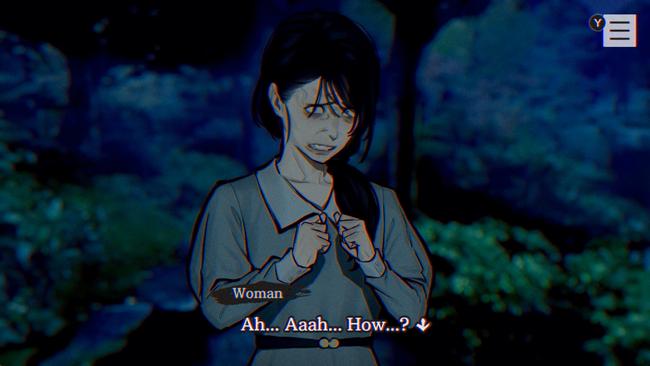
Paranormasight also takes advantage of the 80s time period it's set in for other parts of its presentation. The game is displayed inside a retro colored television by the Storyteller, so a lot of its aesthetic is guided by this facet. Opening the menu to read the log is met with the familiar buzzing chime when firing up one of those early TVs. Even the overall image fidelity throughout gameplay exhibits some film grain that provides a slight vintage feel to Paranormasight as a whole.
Lastly, I want to commend the development team in how they filled Paranormasight with some of the most detailed journal entries I’ve seen in an adventure game.
Each character entry has so much written about them that effectively sums up all the information the player has learned about them, and most of them are continually updated with new information as the story progresses. There’s also a wealth of supplemental information about several characters that aren’t always spelled out in the story itself.
There are also dozens of keywords that have an amazing amount of text, especially the Seven Mysteries of Honjo themselves. These contain a description of the urban legend and eventually, what each of their Curse Stones do - and the expansive tale of the Resentful Memory inside of them. All of the real-life and fictional locales are also given elaborate descriptions and explanations for those eager to learn more about the places they’re visiting in this game.
It is very easy to feel the development team’s love of the occult throughout these journal entries as they break down the state of the occult craze in 80s Japan and how it shaped Japanese society in that era. I was fascinated by it.
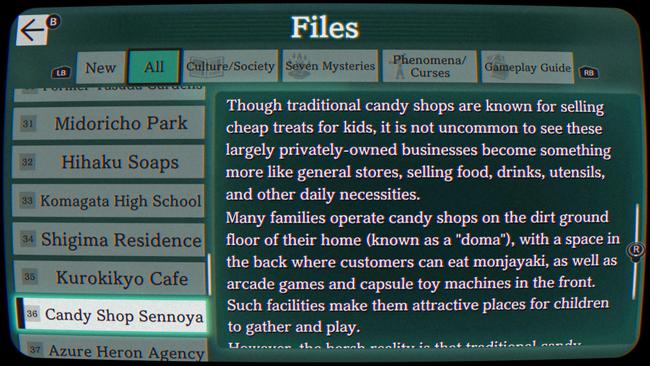
Throughout Paranormasight, players might stumble upon one of the game’s multiple endings. They can easily jump back to an earlier story branch to continue further and there is a true ending that’s a little tricky to reach, if they aren’t sure where to initiate it.
Paranormasight: The Seven Mysteries of Honjo is definitely one of the biggest surprises for me this year. I wasn’t sure what to expect out of its very brief announcement, and I’m glad I didn’t look too deeply into what was shared. I urge people to go into this knowing as little as possible, though I guess if you’ve read this far, I did ruin a tiny bit of its surprises in order to review it. Hey, I did repeatedly give you a spoiler warning before laying everything out.
If you bear the slightest bit of interest in what you just read or what you’ve seen from this game, I heavily recommend playing through it. Luckily, it isn’t a full-priced title either and I think it’s absolutely worth the asking price.